#Paper Waste Reduction
Explore tagged Tumblr posts
Link
Using BIRS, Artificial Intelligence, Machine Learning, Fraud Detection, and Proprietary Algorithms, we can track real-time whether goods and materials are genuinely destructed and recycled.
#Paper Waste Reduction#dubai municipality approved#Food Waste Recycling#Automotive parts recycling in Dubai#Counterfeit items recycling Dubai#Electronics recycling in Dubai#Packaged food/drinks recycling#Pharmaceutical waste recycling in UAE#Brand Protection in UAE#R2 Certified in UAE
0 notes
Text

Farmer Paper Innovated by Kalpana Handmade Paper
#Farmer Paper#Parali paper#Kalpana Handmade paper#Handmade Paper#sustainable farming practices#rice straw#wheat straw#Environmental Impact of Farmer Paper#Utilization of Agricultural Waste#paper manufacturing industry#agricultural residues#virgin wood pulp#Reduction of Agricultural Burning#environmental benefits of Farmer Paper#Sustainable Farming Practices#Crafting Farmer Paper
0 notes
Text
Im going insane of how well we’re all brainwashed packaging and single use shit especially in those quantities are !! Recent additions to lifestyles !! Not a fatality
0 notes
Text
So I learned as of five minutes ago, cobalt hydroxides are 70% of the world's cobalt supply. Went on mindat and this is mostly Co(O)(OH), Heterogenite. There are a ton of weird cobalt selenides and tellurides though, and a lot of cobalt sulfates which I didn't expect.
Looked at a geo paper and this is because the copper and cobalt deposits we usually mine are laterites, which means rain weathers the sediment and over the years they turn from sulfides to oxides (like rust, but for other metals).
The company says they will initially use cobalt hydroxide as a feed source, but will in the future look at "black mass" which is recycled battery material. This is a lengthy extractive process using hydrometallurgy to recover nickel, copper, cobalt, lithium, and manganese as well as cobalt.
how will they do that. good question
*googles*

(Richard et al, 2024: A techno-economic assessment...)
now I've completed all my distractions, I'm forced to teach everybody about cobalt refining
#I'm flying by the seat of my pants here. no idea what ESLR is. Probably some sort of Leaching recovery. I think the paper mentioned CO2.#The other option that's usually taken is pyrometallurgy/smelting which is 'heat the fuck out of it' option.#My guide for this paper is to investigate the technological advancements/process modifications in relation to#sustability waste reduction resource efficiency environment impact; compare with 5/12 circular hydromet principles#suggest actionable strategies or technologies that could be implemented to address any shortcomings identified#UGH. I don't want to look at the Circular Hydrometallurgy paper again.
27 notes
·
View notes
Text
I was gonna make a post about how paper straws ARE actually as awful as everyone says they are, and that plastic straws are e drop in the bucket of plastic waste but
1. Absolutely any reduction in plastic waste is a good thing, and most plastic straws are unnecessary.
2. The whole post was going to be a set up for a straw strawman joke, but it seems like too long a walk.
14 notes
·
View notes
Text
Genetically Modified Bacteria Produce Energy From Wastewater
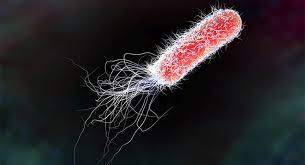
E. Coli is one of the most widely studied bacteria studied in academic research. Though most people probably associate it with food/water borne illness, most strains of E. Coli are completely harmless. They even occur naturally within your intestines. Now, scientists at EPFL have engineered a strain of E. Coli that can generate electricity.
The survival of bacteria depends on redox reactions. Bacteria use these reactions to interconvert chemicals in order to grow and metabolize. Since bacteria are an inexhaustible natural resource, many bacterial reactions have been industrially implemented, both for creating or consuming chemical substrates. For instance, you may have heard about researchers discovering bacteria that can break down and metabolize plastic, the benefits of which are obvious. Some of these bacterial reactions are anabolic, which means that they need to be provided external energy in order to carry it out, but others are catabolic, which means that the reactions actually create energy.
Some bacteria, such as Shewanella oneidensis, can create electricity as they metabolize. This could be useful to a number of green applications, such as bioelectricity generation from organic substrates, reductive extracellular synthesis of valuable products such as nanoparticles and polymers, degradation of pollutants for bioremediation, and bioelectronic sensing. However, electricity producing bacteria such as Shewanella oneidensis tend to be very specific. They need strict conditions in order to survive, and they only produce electricity in the presence of certain chemicals.
The method that Shewanella oneidensis uses to generate electricity is called extracellular electron transfer (EET). This means that the cell uses a pathway of proteins and iron compounds called hemes to transfer an electron out of the cell. Bacteria have an inner and outer cell membrane, so this pathway spans both of them, along with the periplasmic space between. In the past, scientists have tried to engineer hardier bacteria such as E. Coli with this electron-generating ability. It worked… a little bit. They were only able to create a partial EET pathway, so the amount of electricity generated was fairly small.
Now, the EPFL researchers have managed to create a full pathway and triple the amount of electricity that E. Coli can produce. "Instead of putting energy into the system to process organic waste, we are producing electricity while processing organic waste at the same time -- hitting two birds with one stone!" says Boghossian, a professor at EPFL. "We even tested our technology directly on wastewater that we collected from Les Brasseurs, a local brewery in Lausanne. The exotic electric microbes weren't even able to survive, whereas our bioengineered electric bacteria were able to flourish exponentially by feeding off this waste."
This development is still in the early stages, but it could have exciting implications both in wastewater processing and beyond.
"Our work is quite timely, as engineered bioelectric microbes are pushing the boundaries in more and more real-world applications" says Mouhib, the lead author of the manuscript. "We have set a new record compared to the previous state-of-the-art, which relied only on a partial pathway, and compared to the microbe that was used in one of the biggest papers recently published in the field. With all the current research efforts in the field, we are excited about the future of bioelectric bacteria, and can't wait for us and others to push this technology into new scales."
149 notes
·
View notes
Text
Exploring Eco-Friendly Packaging
What is Sustainable Packaging?
Sustainable packaging uses materials and production processes that yield a minimal environmental impact. The aim is to be environmentally friendly.
Benefits of Sustainable Packaging
Biodegradable - They are made from either plant-based or recycled materials that naturally degrade without leaving toxic waste.
Compostable - Decomposes naturally through commercial compost processes. Leaves no trace of plastic.
Recyclable - Commodities consisting of post-consumer recycled paper are recyclable.
Accountable Materials - For example, mushroom fibers, banana leaves, and algae reduce the over-reliance on plastic and the excessive processes involved.
Ethical production - the use of sustainably sourced, locally produced, and fairly traded materials has proven to improve lives while having a lighter impact on the environment.
Small Carbon Footprint - Eco packaging vastly reduces the carbon emissions resulting from traditional manufacturing and waste.
Simple Swaps
Paper or Plastics - Go for paper envelopes, boxes and filler made from recycled content. Don’t use plastic poly bags and bubbles.
Glass vs Plastic - Choose glass bottles over single-use plastics because glass is infinitely recyclable.Support plastic reduction initiatives.
Compostable vs. Styrofoam - Replace styrofoam peanuts with compostable corn starch alternatives. Support the ban on non-recyclable products.
For stylish, zero waste, environmentally friendly packaging solutions pay a visit to Chalogreen. They manufacture their products which are entirely plant-based thus saving the planet.
#jute bags for brand promotion#jute bags#sustainable fashion#jute tote bags#jute bags canada#ecofriendlyproducts#sustainability#ecofriendly#sustainable travel#sustainable living
64 notes
·
View notes
Text
Oh for fucks sake recycling isn't a "scam" by the plastics industry. Plastic recycling often isn't really recycling, it's downcycling (making something different that's still useful but which doesn't alter the demand for raw materials to make the stuff BEING recycled). Or the stuff still ends up getting thrown out anyways. But aluminum recycling is way more energy and resource efficient than throwing out old cans and manufacturing new ones, and glass and paper recycling are also perfectly fine. It's really plastics specifically where recycling has issues.
And waste reduction isn't actually as important as avoiding use of new raw materials.
11 notes
·
View notes
Text

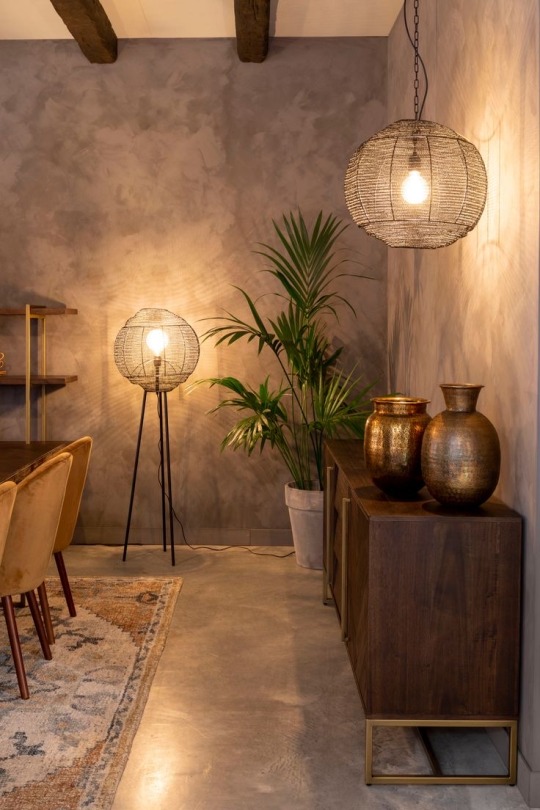
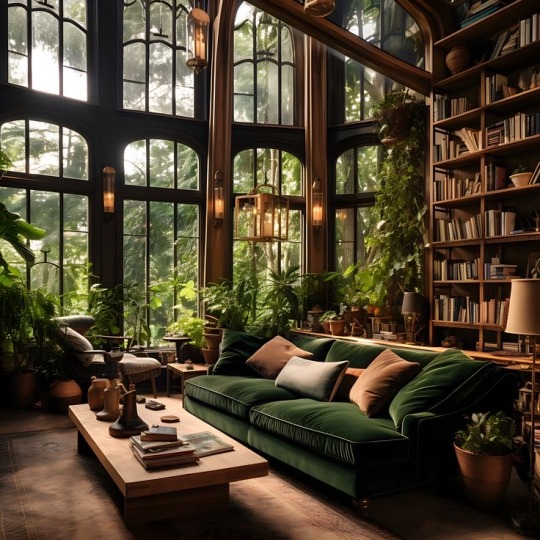
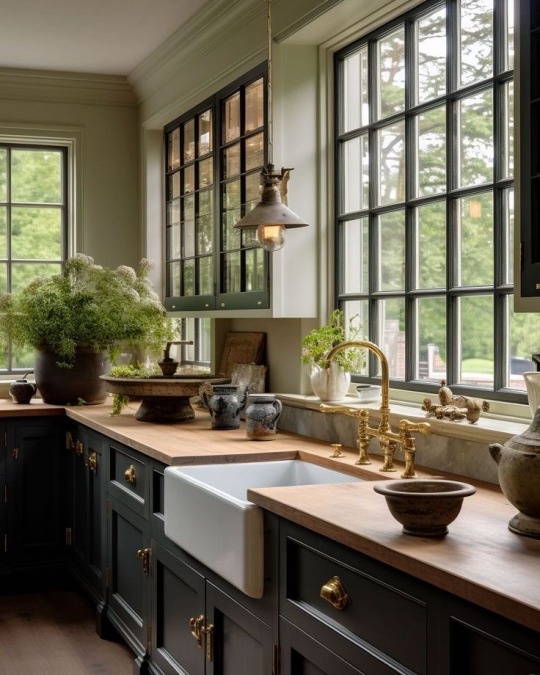
Ways to practice eco-friendly living in your home
1. Reduce energy consumption:
- Install energy-efficient appliances and LED light bulbs.
- Turn off lights and unplug electronics when not in use.
- Use natural light as much as possible.
- Set your thermostat to a lower temperature in winter and higher in summer.
- Insulate your home properly to reduce heating and cooling needs.
2. Save water:
- Fix any leaks in faucets and toilets promptly.
- Install low-flow showerheads and faucets.
- Collect rainwater for watering plants.
- Only run the dishwasher and washing machine with full loads.
- Use a broom instead of a hose to clean outdoor spaces.
3. Practice waste reduction:
- Recycle paper, plastic, glass, and metal.
- Compost kitchen scraps and yard waste.
- Opt for reusable products instead of disposable ones (e.g., cloth napkins, rechargeable batteries).
- Avoid single-use plastics, such as plastic bags and water bottles.
- Use a reusable shopping bag.
4. Use eco-friendly cleaning products:
- Choose natural, non-toxic cleaning products or make your own using ingredients like vinegar, baking soda, and lemon juice.
- Avoid products containing harmful chemicals that can harm the environment and your health.
5. Grow your own food:
- Plant a garden to grow vegetables, fruits, and herbs.
- Use organic and natural fertilizers instead of synthetic ones.
- Compost food scraps to enrich the soil.
6. Opt for sustainable materials:
- Choose furniture made from sustainable materials like bamboo or reclaimed wood.
- Use eco-friendly flooring options like bamboo, cork, or reclaimed hardwood.
- Select paint and other finishes that have low or no volatile organic compounds (VOCs).
7. Reduce plastic waste in the kitchen:
- Use glass or stainless-steel containers for food storage instead of plastic.
- Replace plastic wrap with beeswax wraps or reusable silicone covers.
- Use refillable water bottles and avoid buying bottled water.
8. Conserve energy in the kitchen:
- Use energy-efficient appliances.
- Cook with lids on pots and pans to retain heat and reduce cooking time.
- Opt for smaller appliances like toaster ovens instead of full-sized ovens when possible.
9. Encourage sustainable transportation:
- Use public transportation, walk, or bike whenever possible.
- Carpool or arrange a car-sharing service with neighbors or colleagues.
- Transition to an electric or hybrid vehicle if feasible.
10. Educate and involve your family:
- Teach your family about the importance of eco-friendly practices and involve them in the decision-making process.
- Encourage everyone to adopt sustainable habits and lead by example.
- Discuss environmental issues and brainstorm new ideas for greener living.
#home improvement#work from home#make money from home#homebrew#ecology#ecofriendly#sustainability#home design#home#acne treatment#homedesign#homemade#home decor#home business#home & lifestyle#homestuck#welcome home#homens de sunga#homeinterior#homestyle#cozyplaces#cozy glow#cozyhome#cozy cozy#cozy living#cozyvibes#cozy autumn#cozy fall#cozy mystery#cozycore
89 notes
·
View notes
Note
Absurd 20th century fun fact:
During the Polish People's Republic (1944-1989) there was a time of general shortage of paper. The authorities publicly blamed black market traders (because problems in this country are never their fault) and told people to fight their enemy together by handing out books, etc.
However, people quickly became cunning and people started selling this waste paper for pennies at waste paper collection points, so people was giving a way it, then buying it then giving in away, which is why the country had a lot of paper in the statistics, people probably received some bonuses from the state for being model citizens, but in practice there was still no paper
YYAAAAYYYYYYYYY I LOVE WHEN STATISTICS DONT REFLECT WHAT WAS ACTUALLY HAPPENING IN HISTORY!!!!!!
really makes u realize that history has to be told through Many different subfields INCLUDING things like folklore and whatnot…. the cold hard facts almost never show the Whole Picture ☝️☝️☝️ not always what meets the eye or wtvr….. ahhh i wish i had a more specific example of a red herring/misleading historical statistic ))): cant think of any off the top of my head .
OH i have smth thas not exaclty a statistic but its . kinda related?? the aids epidemic hit south africa Reallt badly and a lot of aids experts tried to explain the epidemic as being caused by the hypersexuality of africans!! which is obviously Really reductive in reality there were a Myriad of other problems . the one i can remember most clearly was that there were some problems with overcrowding i think?? in aids treatment centers whixh exacerbated the spread of aids . not to mention the aids epidemic was a Really sensitive topic bc it happened Right after apartheid ended so it got Highly racialized . more than a medical issue, it was also a social and political issue . also because the s african govt had Just become independent before the aids epidemic happened they were Sorely underprepared to take on such a huge problem . its just a whole shitshow and (as always) the root of all evil is colonialism 😭😭😭👎👎👎👎👎👎👎👎👎
history is Such an Awesome field id major in it if i was any better at reading dense texts 😭😭😭 alas…… I LOVE YUO HISTORY!!!!!!!
#ask#feel free 2 fact check and lmk if anythjng is wrong here!! i am by No means an expert and my memory isnt great . lol#and send me any history tidbits u have no matter how mundane . big fan . ESP S AMERICA .#my knowledge on s american history is embarrassingly small 👎👎👎👎
8 notes
·
View notes
Link
Our mission has always been to implement Circular Economy in the modern day world. Not only to help businesses achieve sustainability but to also reduce the stress of pollution on the environment.
#fabric recycling in dubai#Shoes recycling uae#laptop recycling in dubai#mobile recycling in uae#shampoo bottles recycling dubai#Hazardous Waste recycling Dubai#Carton recycling dubai#recycling company jafza#Glass Recycling Solution in dubai#Light Bulb Recycling in dubai#Paper Recycling in dubai#Recycling paper products#Paper Waste Reduction
0 notes
Text
#Farmer Paper#Parali paper#Kalpana Handmade paper#Handmade Paper#sustainable farming practices#rice straw#wheat straw#Environmental Impact of Farmer Paper#Utilization of Agricultural Waste#paper manufacturing industry#agricultural residues#virgin wood pulp#Reduction of Agricultural Burning#environmental benefits of Farmer Paper#Sustainable Farming Practices#Crafting Farmer Paper
0 notes
Note
plastic straw alternatives make me so mad omg. paper straws? not only do they apparently contain more chemicals than plastic ones, they also suck at being straws! metal straws? can seriously hurt people and also can cause allergic reactions depending on the metal used! glass straws? they fuckin break and that is extremely dangerous!
one thing I will say is that silicone straws work pretty well in my experience, but I’ve seen people complaining about them too and I’m just like… but they’re reusable. and they don’t suck at being straws. unless you have a silicone allergy (in which case do not use them for obvious reasons) they are probably the safest alternative for drinking straws. and people still don’t like them!! agh.
like what are we doing here man. if someone doesn’t like plastic straws they can just… not use them for themselves. wild. most plastic waste in the ocean is from industrial fishing anyway. not people who need plastic straws in order to survive.
(sorry for the rant but yeah. you get it dude👍)
It’s especially stupid to force everyone in your county / state / country to use “cardboard”/“paper” straws that are full of cancer and reproductive health issue causing PFAS that do not biodegrade and if they do, forever poison the soil that they “biodegrade” into
There’s a lot of misinformation about plastic straws too. When McDonald’s switched to their sipping lids and started making you ask for a straw, they didn’t tell you the lids are WAY MORE PLASTIC WASTE than one single use straw
I always recommend silicone as an alternative because wood, metal, and glass are dangerous as hell but single use plastic straws are still mostly harmless, in the grand scheme of “plastic reduction” theatre
79 notes
·
View notes
Text
Good Smile is reducing waste by replacing their plastic packaging with paper, and there's people arguing against it because Nendoroids are ~collectible~ and paper isn't as pretty 💀💀💀 People are so rotted by consumerism that they can't cope with even the slightest reduction in plastic. At this point, if there was a button to stop any new merchandise from being made, I'd press it. Cope. Buy secondhand. If you already do that then there's no need to complain about how companies package things going forward. This is coming from someone who collects a bunch of random things; None of it is a need.
9 notes
·
View notes
Text
if you wanna learn how to reduce your waste and save money go on ig reels, tiktok, or youtube right now and look up “up cycling tutorials” I’ve already learned how to repurpose old candle jars, food jars, plastic grocery bags, bread bag ties, paper towel rolls, cardboard boxes from amazon, and more just go look it up rn you can’t convince me you can’t repurpose literally ANYTHING. don’t buy new, figure out how to use things you already have!!!! if we all adopted these practices it would cause a major reduction in landfill waste!
5 notes
·
View notes
Text

Tuesday 7th November
Today I continued the publication workshop. Suzannah explained to me how to make a ‘zine’ using a high gsm paper or card stock and I got started on that today.
Ethics and Sustainability is important to me and I knew wanted to do collage for my zine. So, instead of printing out new images to collage, I used discarded wrapping paper from gift sets in where I work. I was able to get a variety of colours to collage, and I also used the prints I had done to day before to collage instead of print new ones (recycling and waste reduction)
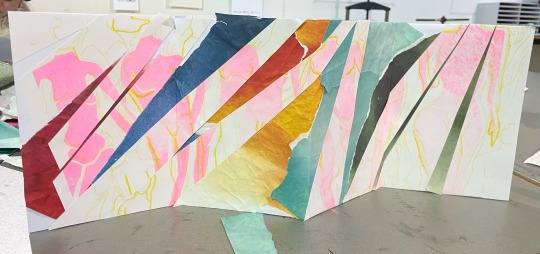
I really like how the zine is looking so far!
I did some research after the workshop yesterday and I discovered that you can print digital art using the risograph if you seperate the layers out. I asked Fiona about it this morning and she was incredibly helpful. There were point where I had a hard time wrapping my head around what colour would turn out which way, and after the walkthrough I completely understand it. I wanted to use the digital art piece I had done previously of myself as the different dolls, and carry on the theme of overlapping the blue/pink and the masc/fem.


I did some proofs and I thought that that pink was a bit light, so I went back to the file and made it darker for it to appear more saturated in print.
I really like the first print below, but I thought it looked a bit plain and needed something else. I then had the idea to add a pink and a blue shadow to each figure, but make it a drop shadow to disrupt to colour order and the way it will be perceived. However you can still see the silhouette and the details of the figures.
In the overlapping print, the masculine one is more prominent. The feminine one fades into the background a bit more. This reflects how other people perceive me physically as mostly masculine, and even though the femininity is there and it’s a strong force in itself, it’s disrupted by the masculine influence.
I plan to play around with the different prints I have on Thursday and finish off my zine:)
#art #student #artstudent #lsad #print #digitalart #jackjosephryan
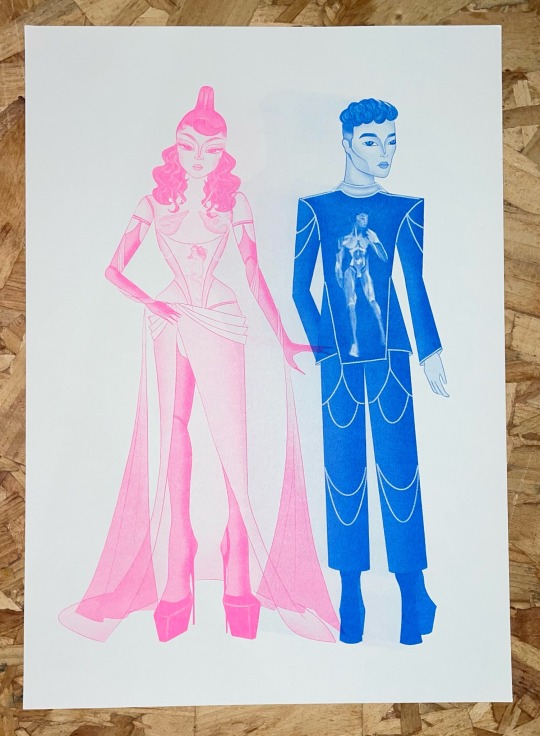

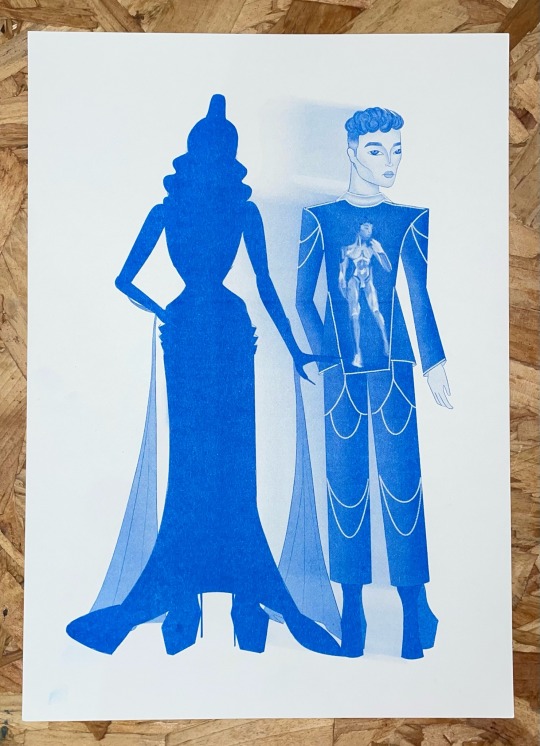

21 notes
·
View notes